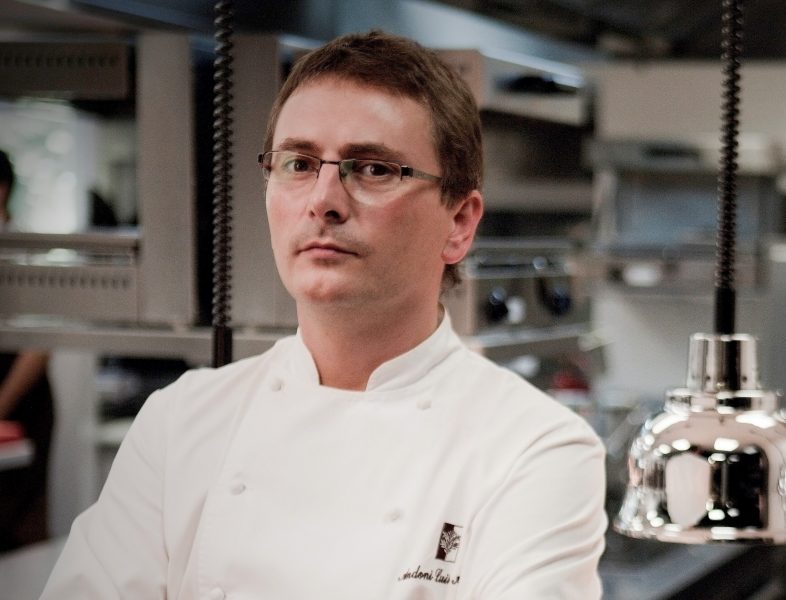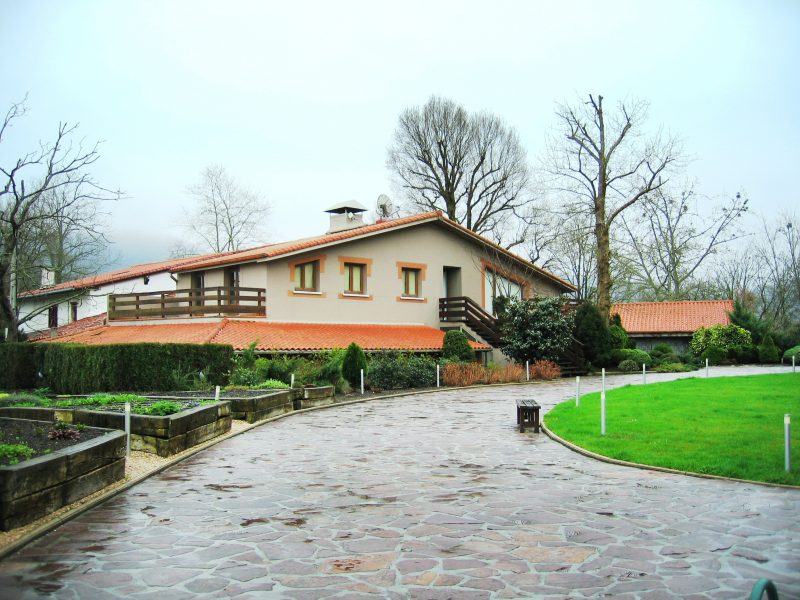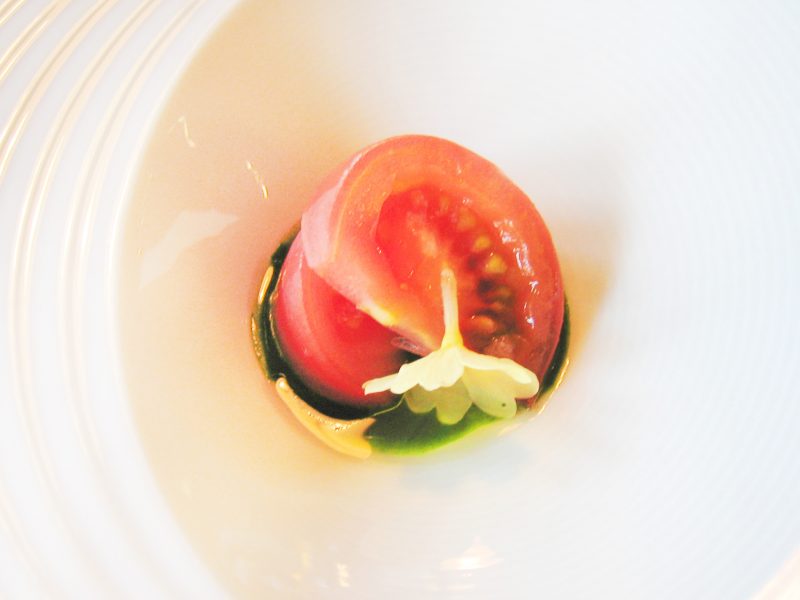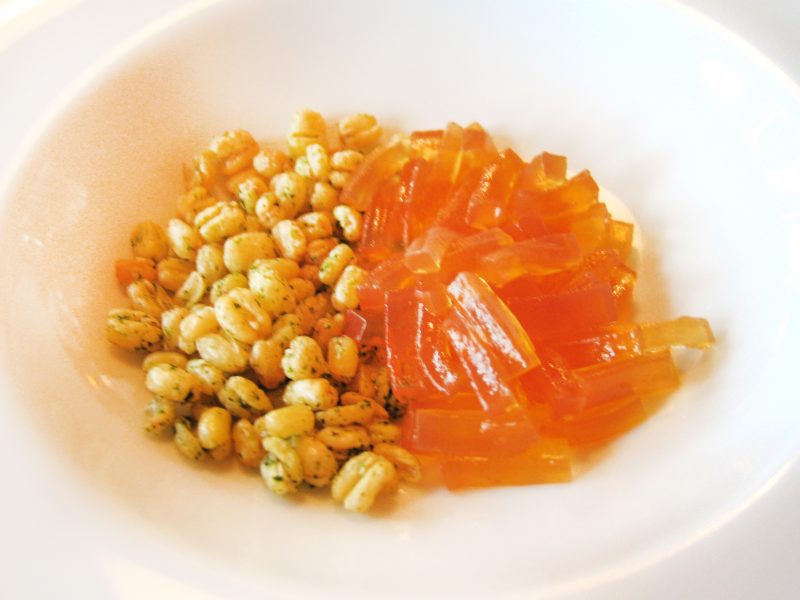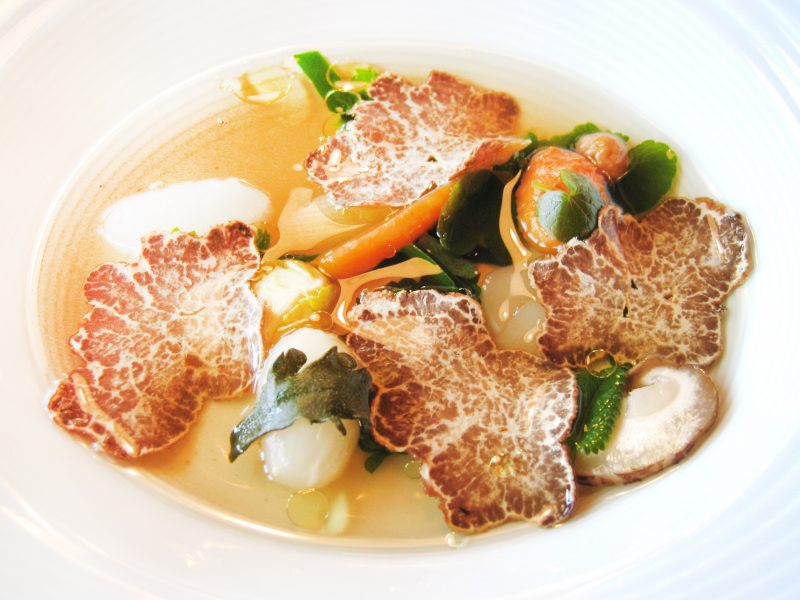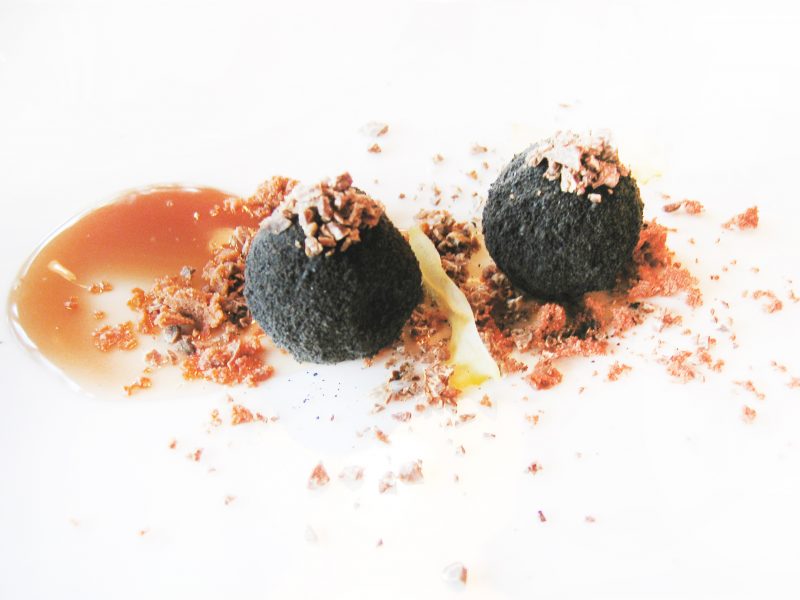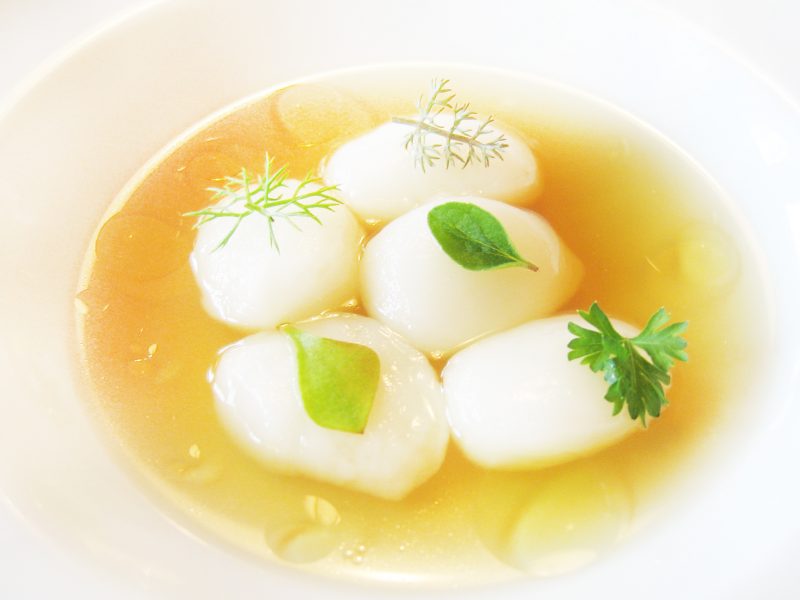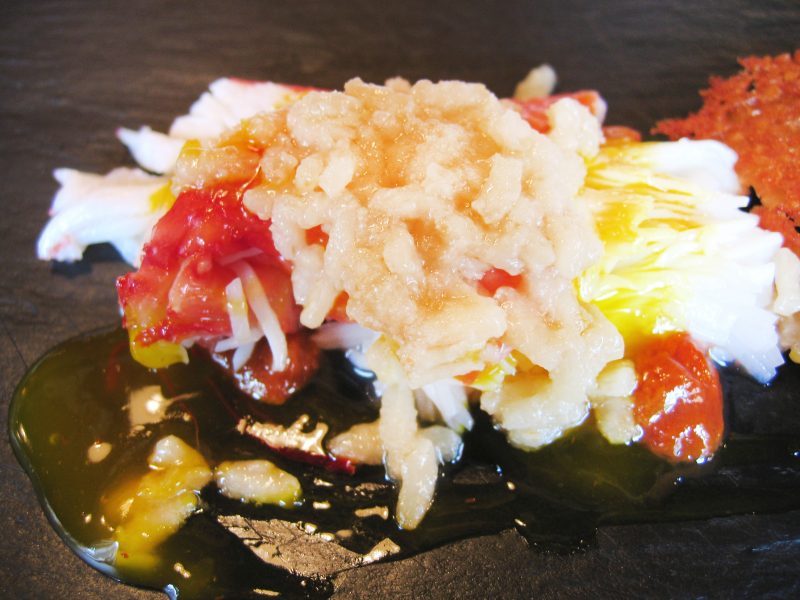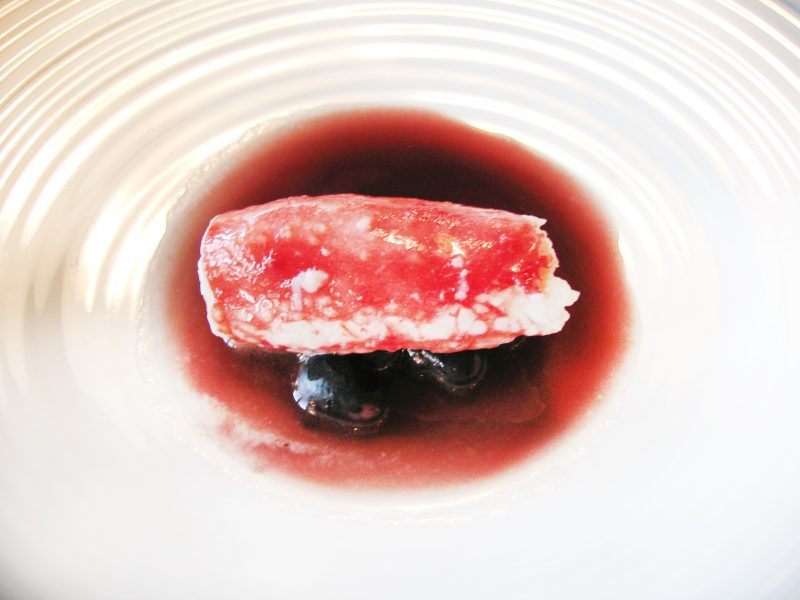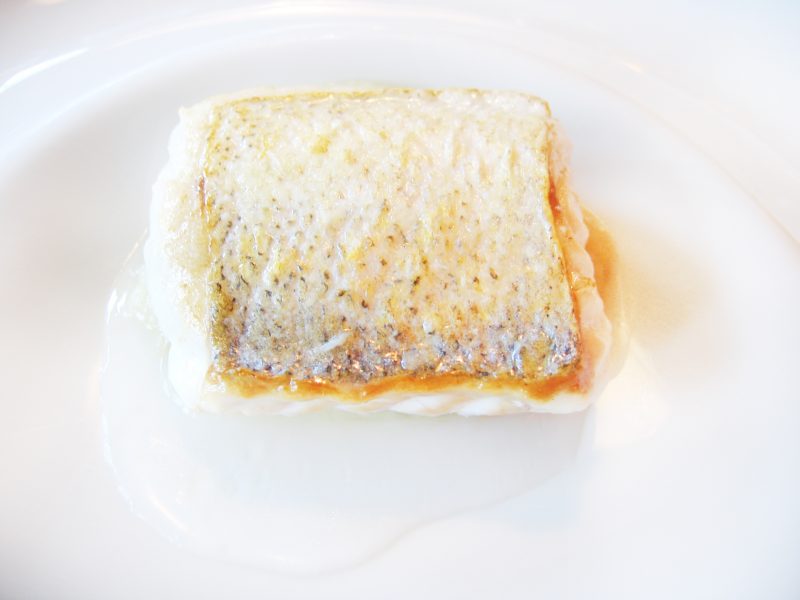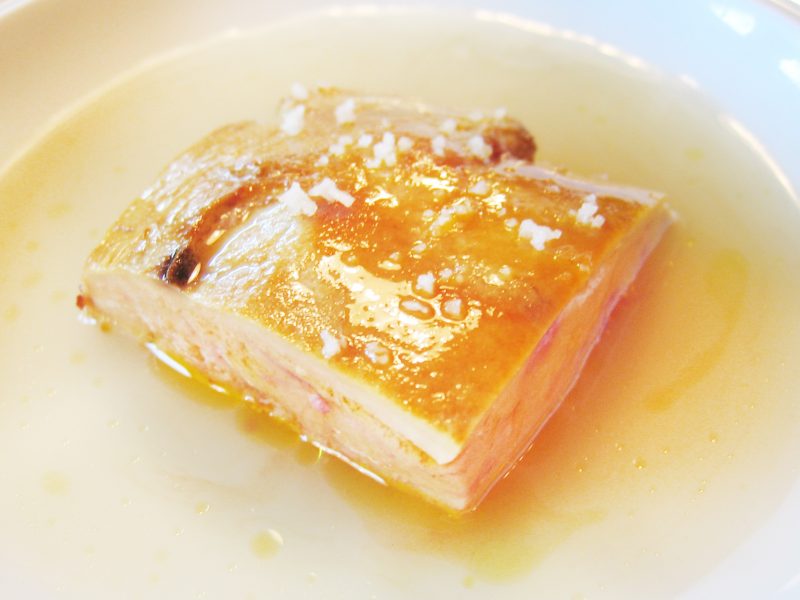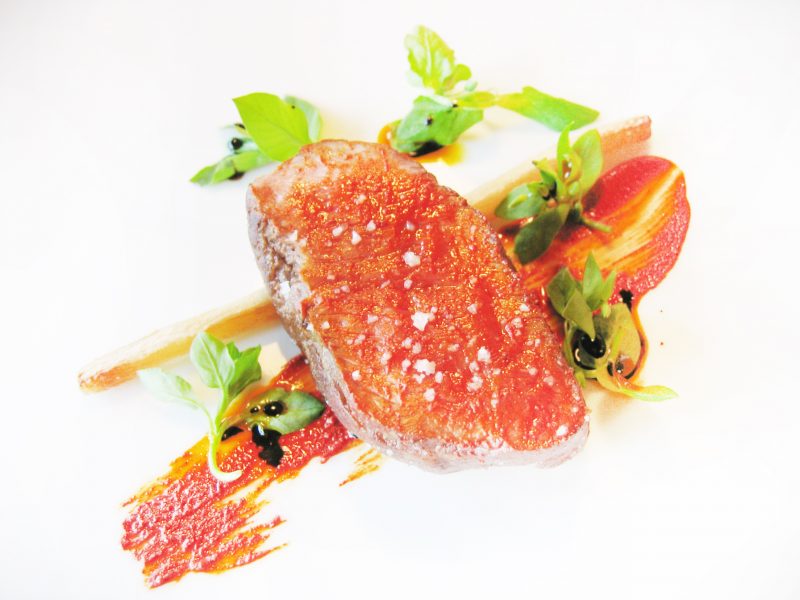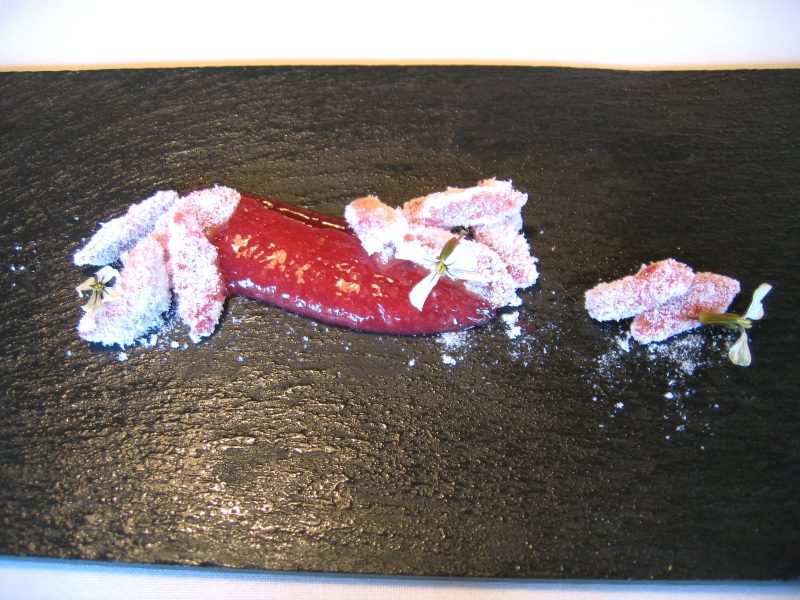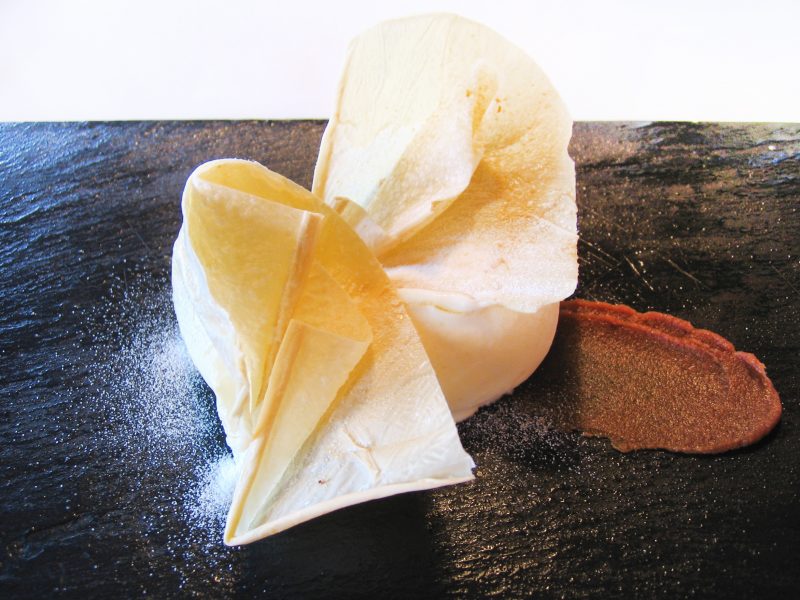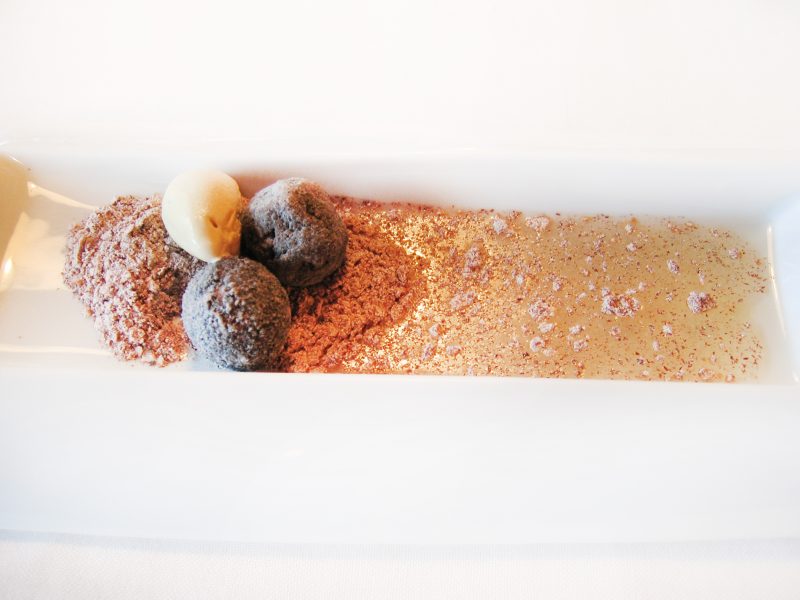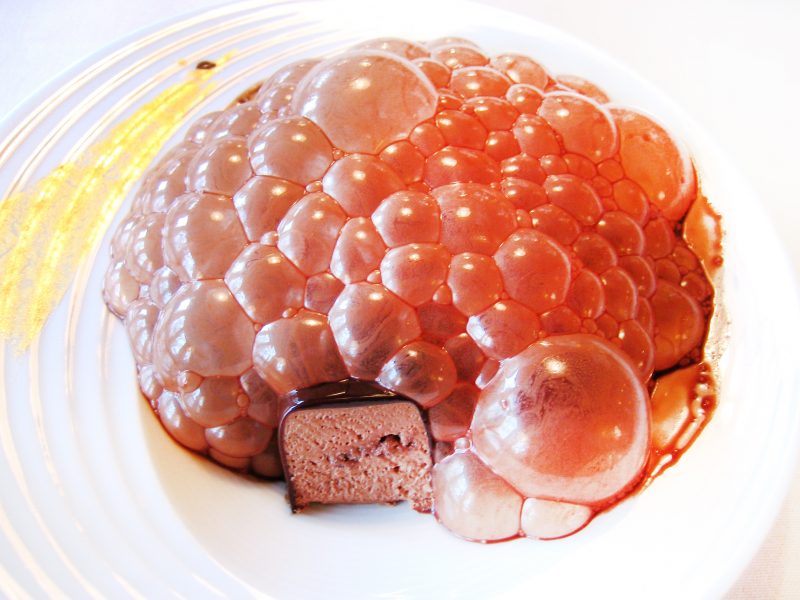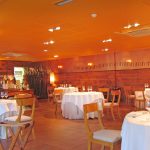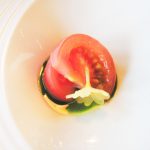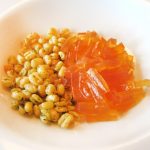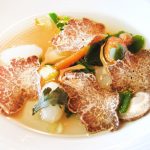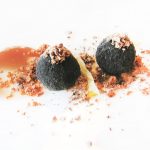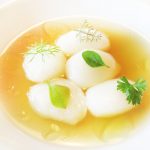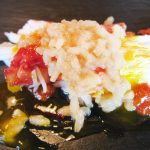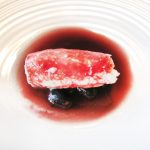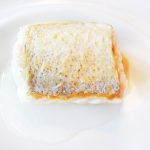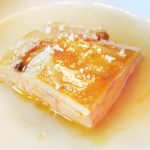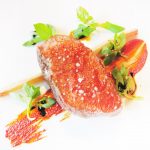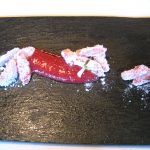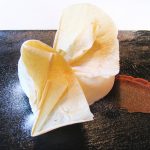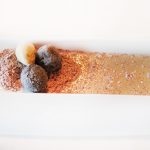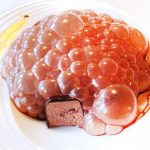Tucked away in the dense oak woodlands on a hill in the outskirts of San Sebastian, the contemporary but rustic farmhouse of Mugaritz echoes Adoni Aduriz’ ethos of cooking, that nothing is quite as it seems. It would be incorrect to define Aduriz’ cuisine as being purely molecular as he combines his skills with an appreciation and focus on fresh seasonal local produce, something which the Basque has in abundance and that many chefs could only dream of.
On arrival the mood was set by the billowing smoke of the brazier wafting across the entrance of the guesthouse. Sipping over a lovely glass of a creamy Privat Opus Evolutium cava, the Japanese wooden placard of “Mugaritz” on the wall was a subtle reminder that this was no ordinary Basque farmhouse. We had an opportunity to have a quick tour of the kitchen before we were seated at our table and made to ponder as to whether we would submit or rebel for the next 150 mins. Unsurprisingly, we all decided to submit, and let our senses be guided by Aduriz’ brigade of chefs for the evening.
Just as soon as we succumbed, the waiter placed the first amuse bouche on the table. They were Aduriz’ famous edible stones (potatoes covered in kaolin, an edible clay), which took him a year to research and perfect with his sister who is a pharmacist. Though the potatoes looked and texturally felt like Japanese pebbles, as soon as you bit into it the thin casing immediately dissolved into the sweet and tender flesh; a truly deceptive but perfectly balanced dish both in terms of texture and temperature.
Another amuse bouche worthy of mentioning was the crunchy sauce with peppers, which essentially was a dehydrated broth. The texture was similar to that of a prawn cracker but much thinner and delicate, and we were amazed at how it melted into cream as soon as it touched our tongues. The pepper added a sharpness to the dish which it needed and worked really well. We were generally struck with the unique array of amuse bouches and knew that Aduriz was going to be challenging our every pre-conception of food. The accompanying white Rioja, Remelluri Blanco 2008 was chosen by our sommelier Nico who challenged us to try something other than the local Txacoli; an advice which turned out to be most welcome!
As our waiter served us one of our main sources shhhhh…cat got your tongue!, we were asked to guess what the primary ingredient was. Embarrassingly only one of us managed to guess that it was veal tongue, but we were again impressed at how Aduriz changed and manipulated the texture of his primary ingredient. On a side note, one of our friends did remark that it reminded her of hair pulled out of the plughole. She made us laugh of course, but we questioned then whether the presentation could have been more appealing. The following course threads of steamed sea anemone with bone marrow… to dip the bread, which despite being a bit salty, was a stunning dish. I wasn’t a fan of anemone from past experience possibly due to poor preparation, but I thought Aduriz got the flavour spot on by introducing the soft and creamy bone marrow. The flavours worked in harmony together and we thoroughly enjoyed dipping the bread as we mopped up every morsel.
I must admit that given the location and having read other reviews, I had hoped for a lovely cut of steak like the one I had in Etxebarri, and therefore I was a bit disappointed to see woodcock in roasted gamebird with black quiona custard. This was particularly because it was our least favourite dish which we had earlier that year in el bulli. Admittedly, the meat was cooked perfectly but the strong flavour of the black quinoa custard did not marry well with the strong gamey flavour of the meat.
Our final savoury course of the evening was the three spoons of a creamy white bread, which was kuzu bread (the root of a Japanese plant which contains starch) accompanied by three spoons of olive, walnut and sweet onion. We enjoyed the varied flavours that went with the bread but struggled to finish it as we felt the ratio of bread-to-garnish was uneven, leaving you with an overwhelmingly starchy flavour in the end.
Our favourite course was without a doubt the broken walnuts, toasted and salted, cool milk cream and armagnac jelly. What appeared to be a walnut was a chocolate encasing a sweet armagnac jelly, and the accompanying tangy and thick goat’s milk ice cream cut through it perfectly. To top it off, the addition of some real salty toasted walnuts enhanced the flavour of all the components on the dish. We all could have easily had another plate easily! The finale was a crisp of flax seeds and whisky parfait, which surprisingly had very little whisky flavour and was a disappointing note to finish the evening on.
The food in Mugaritz was definitely unique. Aduriz did not fiddle with too many ingredients for each course, typically using four or five at most, and he kept the flavours simple despite the highly complex preparation. We did however feel that occasionally the technique and its novelty in application took precedence over the essence of the flavour of the dish. I was slightly bitter at not being served their petits fours despite half of us ordering coffee and tea (and the table around us were evidently enjoying them).
Service was occasionally amiss as we had to wait ten minutes at one point to get a missing hand towel for one person and I felt we were being rushed towards the end, which was understandable given it was the last day of the season. However, when one has to submit to the only tasting menu which comes at €175 a head, as good as it was, would it not be fair to want to take your time and enjoy the experience?
www.mugaritz.com
This review is in collaboration with Dining Without Borders.
